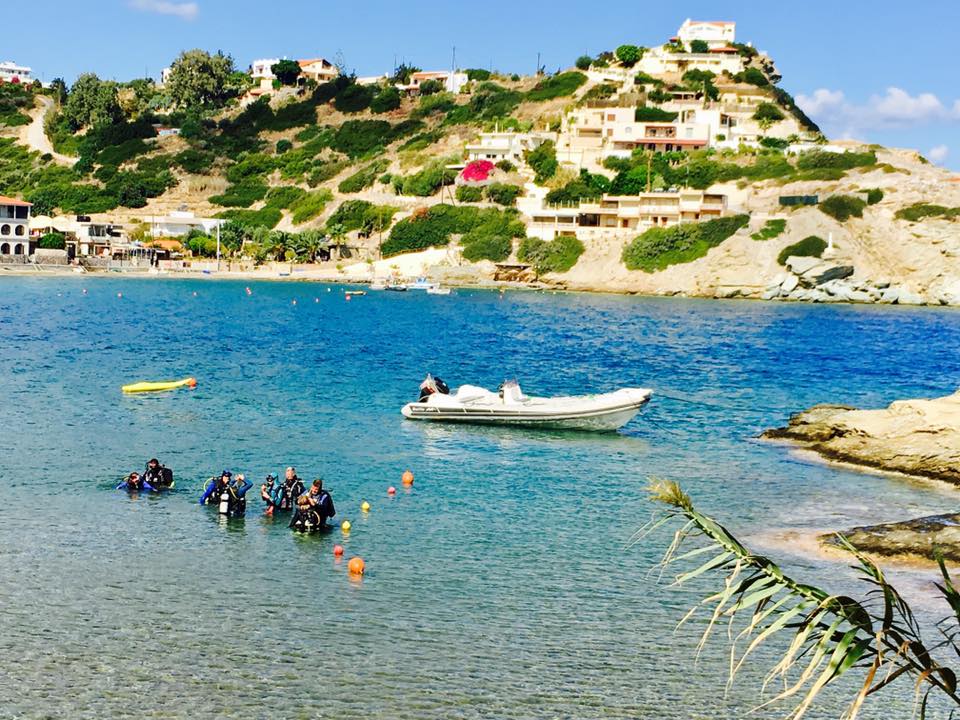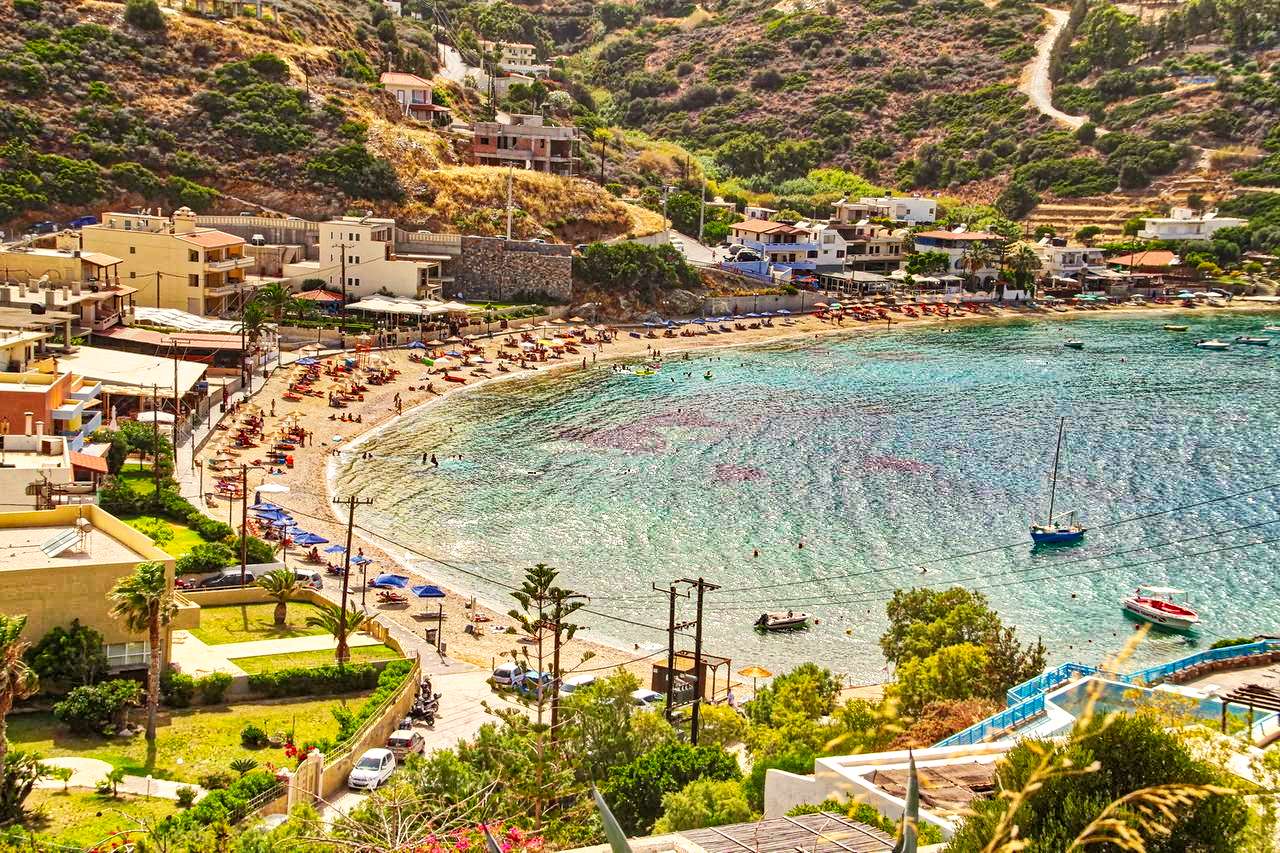When you stay at Fodele Beach & Water Park Holiday Resort you have enough room to sunbathe. The resort has an excellent seafront location with access to the beautiful sandy beach of the village. There’s plenty to do here, but if you want to explore other seaside destinations on Crete, Ligaria can be reached in less than twenty minutes by car.
Like the beach of Fodele, Ligaria (also spelled Lygaria) is set in a beautiful bay with a semicircular inlet, well protected from the Northwest winds. The beach is well organized, with sunbeds and umbrellas lining up the shore facing the sea in front of the traditional beach taverns and cafes. The water is clear and clean, excellent for swimming and snorkeling. In fact, the European Diving Institute – Diving Center is headquartered at Paralia Ligaria and they offer diving classes right on the beach.

European Diving Institute – Diving Center at Paralia Ligaria
Ligaria is named for the osier shrubs (in Greek “ligaria”) that grow in the area. The nearby Panagia Deligara Monastery (also known as Lygaria, Ligaria or Ligariotissa) got its name from the beautiful plants too. Today, the church of Panagia (Our Lady) at the monastery is one of the main attractions for tourists who visit the beach. The monastery is a historical landmark, which traces its origin to the late 1500s, early 1600s (it was first mentioned in a 1610 document).
For the locals, however, Parasfougario is a lot more appealing. This is a “secret” beach by the cape that protects Ligaria, a lovely little stretch hidden behind the rocks and rather hard to reach. It takes a daring beachgoer to spend time on this beach especially on a windy day.
Ligaria itself tends to get pretty crowded in the weekend and in full season, although weekdays are usually more relaxed. It doesn’t attract only tourists, but also many of the locals.

Comments are closed.